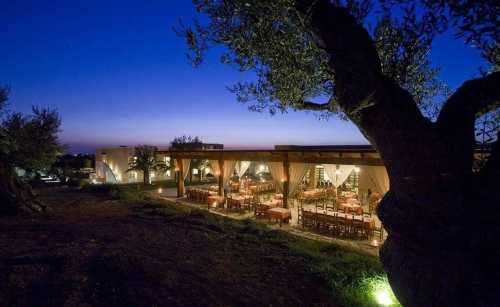#Overseas Travel Gallipoli is one of the seaside towns at the foot of southern Italy. Due to its long distance, there are relatively few tourists, but it has remained simple and quiet. The old town of Gallipoli was built in the 16th century. It is almost an island, as it is connected to the new town by only one bridge. Fishing boats of all sizes can be seen around, making it a veritable fishing port. When visiting here, you can walk along the coast of Gallipoli, around the entire island, stroll along the coast and experience the fishing village style here. #ItalianTravel #OverseasTravel #EuropeanTravel
Scarlett To 旅遊玩樂誌
Popular Trip Moments
Recommended Attractions at Popular Destinations
Bangkok attraction near me | Manila attraction near me | Tokyo attraction near me | Taipei attraction near me | Hong Kong attraction near me | Seoul attraction near me | Kuala Lumpur attraction near me | Los Angeles attraction near me | Shanghai attraction near me | New York attraction near me | Shenzhen attraction near me | Osaka attraction near me | Singapore attraction near me | London attraction near me | Guangzhou attraction near me | San Francisco attraction near me | Beijing attraction near me | Macau attraction near me | Bali attraction near me | Jakarta attraction near me | Paris attraction near me | Ho Chi Minh City attraction near me | Istanbul attraction near me | Phuket attraction near me | Chicago attraction near me | Seattle attraction near me | Toronto attraction near me | Orlando attraction near me | Cebu attraction near me | Chiang Mai attraction near me
Popular Attractions
Dubai Marina Yacht Cruises | Tokyo National Museum | Taronga Zoo Sydney | Yangtze River Cableway | YONA Beach Club Phuket | Maiden's Tower | Jasper National Park Of Canada | Museum of The Future | Golden Horn | Monument to the People's Heroes | Nanluogu Xiang | Zhangjiajie National Forest Park | Qianmen Street | Bostancı Amusement Park | Zootopia | Canmore, Alberta | Sunset Cruise Langkawi | Istiklal Avenue | durga mandir | St Thomas Anglican Church | hussaini azakhana | Field Skorpions Varese | Student Library | Villas Soulacaises | Biserica "Centrul de Ajutor Spiritual" - Церковь "Центр Духовной Помощи" | Whitworth Park | Santibáñez, Cantabria | Alta Mesa Baptist Church | Independence Square | The Ancient City
Popular Restaurants in Gallipoli
Agriturismo Il Trappeto | Ristorante DolceVita | Matre | La Locanda Degli Angioini | Eskada | Trattoria La Stazione | Flora - Fusion Experience | Ulivo Bianco | You - Cibo e Piacere | Pizzeria la Giara Art | Lostepizza | Calò Urban Food | Enoteca Gastronomica Rubino | Al Pescatore Ristorante | Pizzeria Terra del Sol | Scafud - Terra | Pane Olio e Fantasia | La Pentola degli Gnomi | Bellavista Club Hotel Et Restaurant | Belvedere | Il Re Della Pizza | Il Bastione | Ristorante Zerostelle | La Dolce Vita | Fontana Greca Caffe' | La Puritate | Tajmahal Cocktail Bar | LiMorsiToi | MordiMare | osteria Piazza Antica
Popular Ranked Lists
Top 15 Local Restaurants in Christchurch | Top 12 Local Restaurants in Akureyri | Top 5 Best Things to Do in Taizhou | Popular Must-Visit Restaurants in Dubai | Popular Must-Visit Restaurants in Milan | Top 3 Best Things to Do in Fuding | Top 6 Best Things to Do in Bijie | Top 5 Best Things to Do in Songpan | Popular Premium Hotels Near Garland County | Popular Best Things to Do in Jiamusi | Popular Premium Hotels Near Branson | Popular Must-Visit Restaurants in Dalat | Popular Must-Visit Restaurants in Bali | Top 7 Best Things to Do in Yulin | Top 3 Best Things to Do in Chuxiong Prefecture | Popular Luxury Hotels in Bouches-du-Rhone | Popular Premium Hotels in Durango | Popular Must-Visit Restaurants in Florence | Popular Premium Hotels in Oudtshoorn | Popular Must-Visit Restaurants in Fukuoka | Popular Must-Visit Restaurants in Kyoto | Popular Best Things to Do in Liancheng | Popular Luxury Hotels in Ramatuelle | Popular Must-Visit Restaurants in Chiang Mai | Popular Must-Visit Restaurants in Ho Chi Minh City | Top 9 Local Restaurants in Wellington | Popular Best Things to Do in Panjin | Top 6 Best Things to Do in Lu'an | Top 9 Local Restaurants in Lushan Global Geopark | Top 10 Local Restaurants in Valletta
Payment Methods
Our Partners
Copyright © 2025 Trip.com Travel Singapore Pte. Ltd. All rights reserved
Site Operator: Trip.com Travel Singapore Pte. Ltd.
Site Operator: Trip.com Travel Singapore Pte. Ltd.












